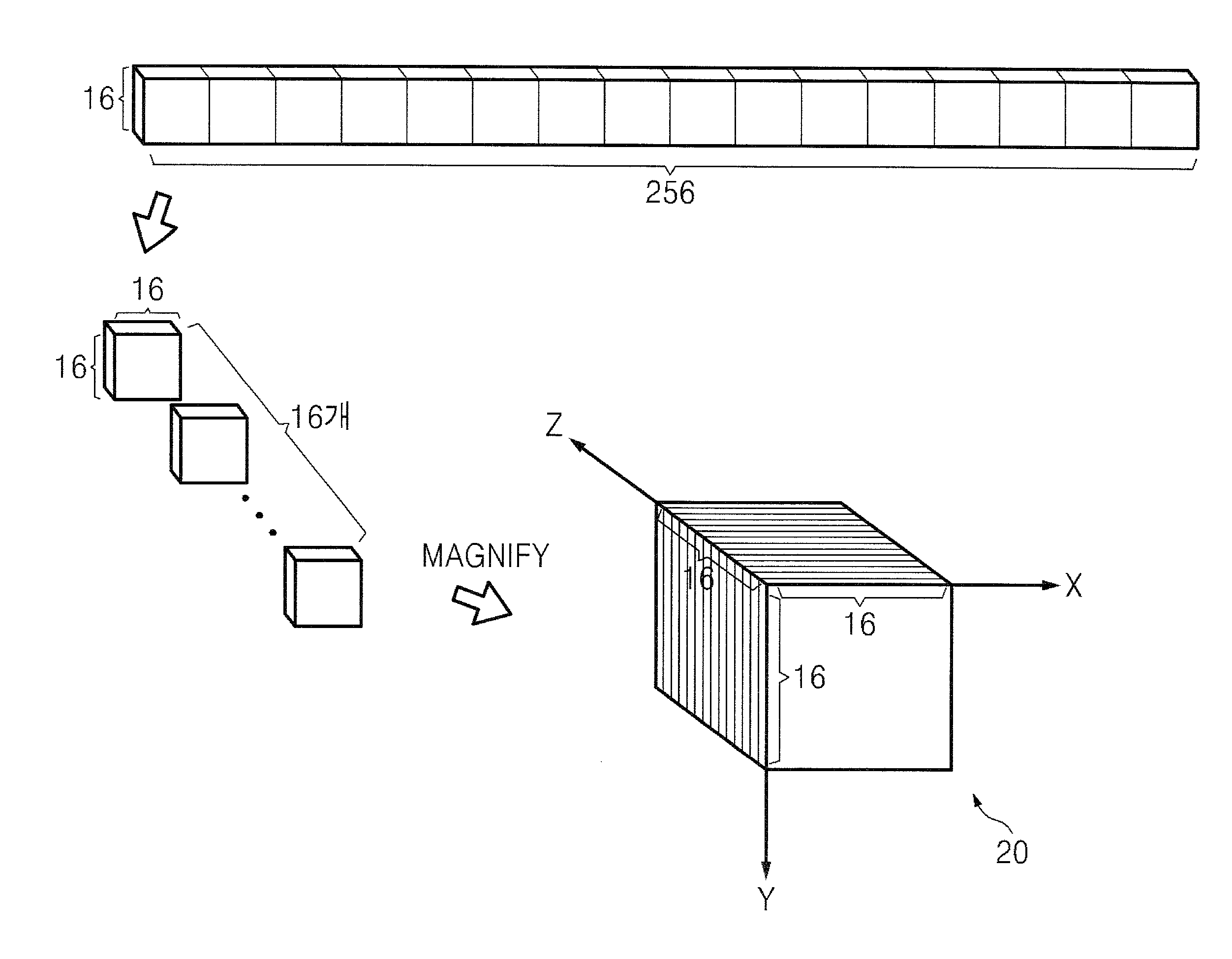Buffer memory for rotating image, image capture device and display device including the same
a technology of rotating images and buffer memory, applied in the field of semiconductor devices, can solve the problems of difficult hardware design of buffer memory, inability to reduce the need to increase the size of buffer memory, so as to achieve the effect of reducing the memory size necessary and facilitating addressing
- Summary
- Abstract
- Description
- Claims
- Application Information
AI Technical Summary
Benefits of technology
Problems solved by technology
Method used
Image
Examples
Embodiment Construction
[0028]FIG. 2 is a schematic diagram of a method of forming a buffer memory 20 for rotating an image according to an embodiment of the present invention. For clarity of the description, a 16-line buffer satisfying 32-bit 4-burst transaction and an image having a vertical resolution of 256 are used in the exemplary embodiments of the present invention.
[0029]Unlike the conventional buffer memory for rotating an, image that includes two line buffer memories, the buffer memory 20 according to the current embodiment of the present invention three-dimensionally maps an address using a single line buffer memory and achieves the same effect as that obtained when the two line buffer memories are used. A line buffer memory having a size of 16×256 is divided into 16 macro units having a size of 16×16 and the line buffer memory is subjected to address mapping so that the 16 macro units are stacked. Consequently, the buffer memory 20 having a cube shape can be logically embodied, as illustrated i...
PUM
 Login to View More
Login to View More Abstract
Description
Claims
Application Information
 Login to View More
Login to View More - R&D
- Intellectual Property
- Life Sciences
- Materials
- Tech Scout
- Unparalleled Data Quality
- Higher Quality Content
- 60% Fewer Hallucinations
Browse by: Latest US Patents, China's latest patents, Technical Efficacy Thesaurus, Application Domain, Technology Topic, Popular Technical Reports.
© 2025 PatSnap. All rights reserved.Legal|Privacy policy|Modern Slavery Act Transparency Statement|Sitemap|About US| Contact US: help@patsnap.com



